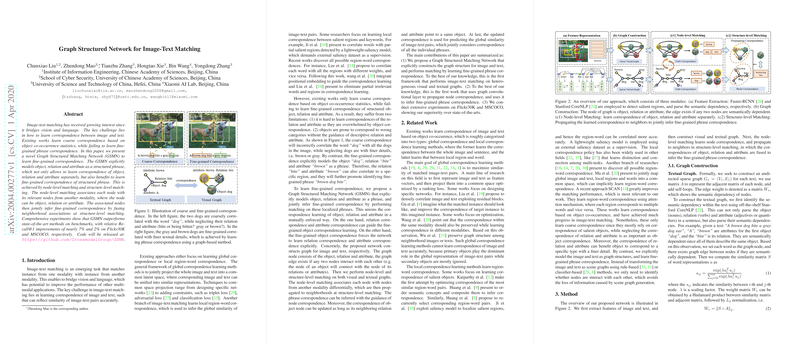Insights into the Graph Structured Network for Image-Text Matching
The paper "Graph Structured Network for Image-Text Matching" presents a novel approach to address the challenges in image-text matching by employing a Graph Structured Matching Network (GSMN). This network aims to improve the fine-grained correspondence between images and text by modeling relationships explicitly through graph structures. The paper identifies the prevalent issue within existing methods, which often rely heavily on object co-occurrence statistics and fall short in establishing detailed phrase correspondences, as a fundamental limitation. GSMN introduces an innovative methodology to resolve these shortcomings and achieve superior performance in benchmark evaluations.
The central focus of the GSMN is on fine-grained correspondence learning. Unlike prior methods that either learn global correspondences by projecting entire images and text into a common space or learn local correspondences by mapping specific regions to words, GSMN innovatively structures the image and text data into graphs where nodes can represent objects, relations, and attributes. The key technical steps include node-level matching, where each node is aligned with its counterpart in the different modality, and structure-level matching, which propagates these matched nodes across the graph, enhancing the identification and correlation of objects with explicit details derived from attributes and relationships.
In terms of performance evaluation, GSMN demonstrates substantive improvements over state-of-the-art methods on widely recognized datasets such as Flickr30K and MSCOCO. Quantitatively, GSMN achieves relative Recall@1 improvements of nearly 7% and 2% on the Flickr30K and MSCOCO datasets, respectively. These results underscore the efficacy of using graph-based representations for image-text matching tasks. Notably, the approach outpaces previous methods such as PFAN and SCAN by leveraging graph convolutional networks to effectively capture and utilize the structured relationships between textual and visual data.
From a theoretical standpoint, the introduction of graph structures to model fine-grained relationships presents a significant advancement. The mutual reinforcement between relation and attribute correspondences aids in the effective learning of detailed object correspondences. Practically, such precise mapping could enhance applications in areas like multimedia retrieval, automated content generation, and AI-enhanced user interfaces where seamless integration of visual and textual information is crucial.
Looking forward, the GSMN approach opens avenues for further research in improving the granularity of cross-modal representations. Future developments could explore even more sophisticated graph models or dynamic graph structures that adaptively modify node representations based on semantic or contextual shifts. Moreover, the interplay between GSMN and evolving deep learning paradigms such as transformers or attention-based mechanisms could yield even richer feature representations to advance cross-modal connectivity.
Overall, the proposed gsmn framework offers substantial contributions to the field of image-text matching, affirming the potential of graph-based structures in bridging the gap between natural language and vision. The paper successfully conveys a methodical approach to enhance existing algorithms and sets a solid foundation for subsequent innovations in this interdisciplinary area.
